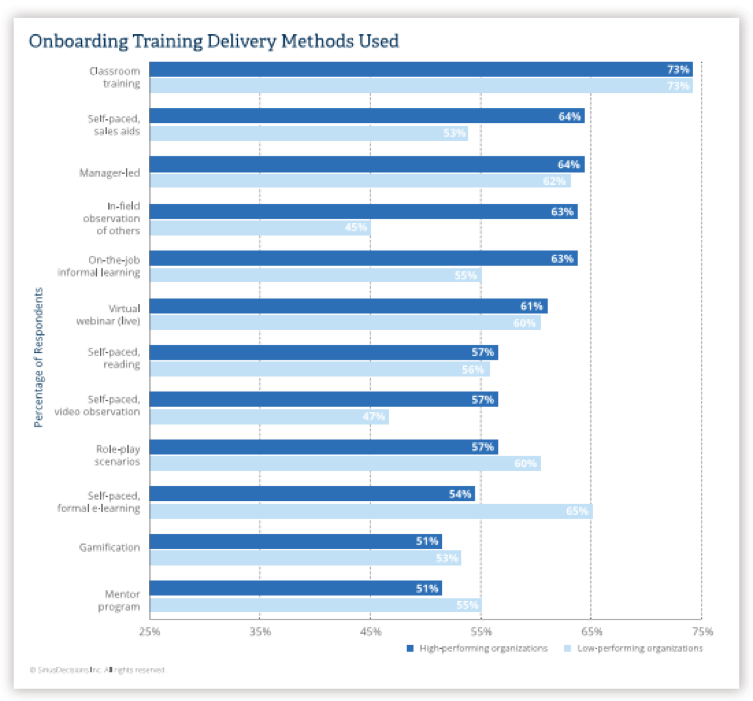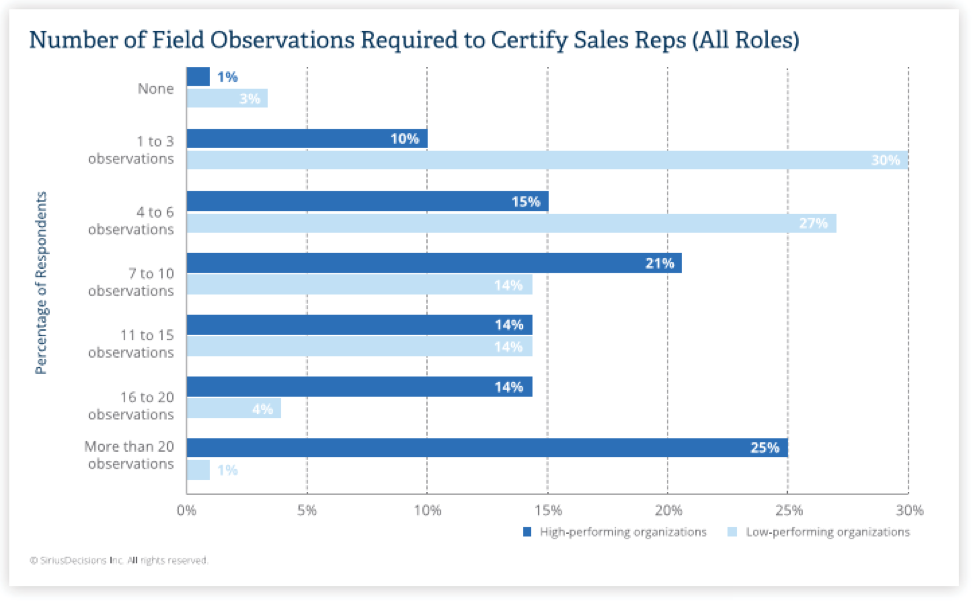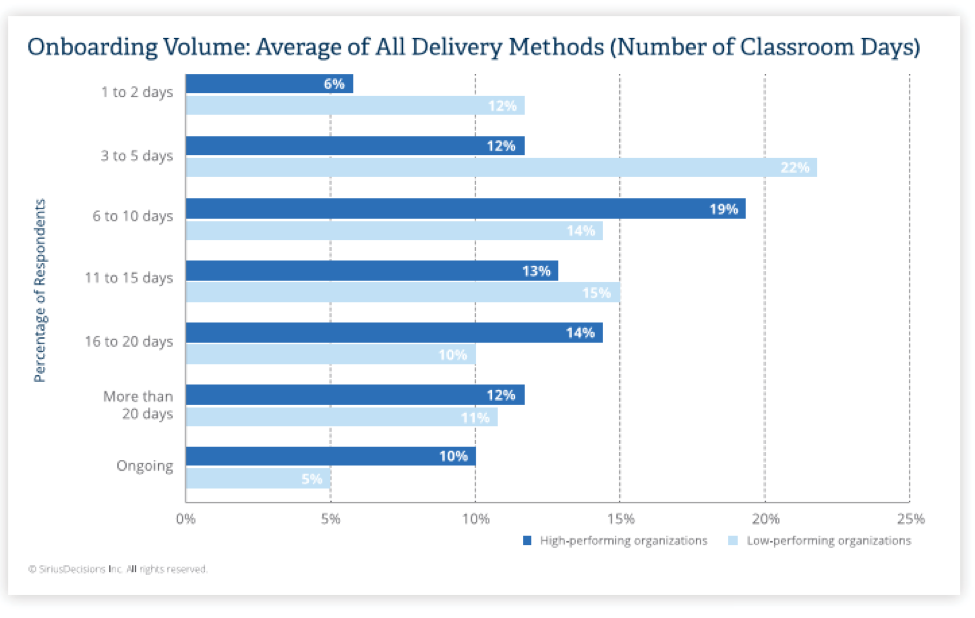Classroom training.
Those two words can make even the most seasoned professionals cringe. After all, by the time we’re entrenched in the business world, we think we’ve long since left the classroom behind.
But the fact remains that there is still a place for classroom environments in some business scenarios — and immersive sales training is one of those areas. In fact, SiriusDecisions recently released its State of Onboarding 2017, and 73% of top-performing (and even 73% of less-than top performing) organizations still rely on classroom training to onboard new sales reps.
But it’s not all classroom all the time.
For training to be successful, variety is essential.
The second most popular onboarding method is self-paced job aids, with 66% of top-performers utilizing this method. This — of course — makes sense in our digital driven, self-service world, especially as digital natives become the majority of the workforce. (Did you know that millennials are poised to make up half of the workforce in just three years?!)
Here’s a glimpse of the most popular onboarding methods directly from the report, which surveyed B2B sales enablement professionals who have been in role at least two years, from 45 different industries. You’ll notice that while both top and low performers utilize classroom training equally, top performers rely heavily on self-paced job aids, there is a significant delta to low performers, which is quite telling.

Overall, high-performing organizations deploy all 12 of these methods more than low-performing organizations, and it makes sense. We all learn differently, and the best way to impact absorption is providing content in a variety of ways with repetition. It’s a case of using traditional, established methods like classroom training and mentorship with new, innovative ideas such as in-context training, gamification, and formal e-learning. To help sales reps succeed, it’s important to offer options that meet the different ways people learn best.
Taking It into the Field
As valuable as it is, no amount of training can replace the real-world practice of talking to customers — dealing with real-world scenarios, special requests, and questions — and that’s why virtually all survey respondents reported that their organizations require first-line sales managers, field sales coaches, or the sales enablement team to formally observe new reps’ field activity in real-life, buyer-facing scenarios. There is simply no substitute for interacting with buyers. You’ll notice that top performers require the most observations, with a quarter requiring more than 20 observations.

Field practice drives confidence, lets sellers practice with an experienced partner backing them, and ultimately helps enforce to sellers that they have the support of the organization. Obtaining selling certifications also signifies a certain level of confidence in buyers — that they are working with an organization that values its client relationships and will provide them with sales reps who will work to meet their evolving needs.
How Much Is Enough?
Successfully onboarding sales reps is more of an art than a science. Finding the sweet spot of the right amount of formal and informal onboarding takes trial and error and listening to your reps. While it can be tempting to try to cram a lot of information into a short window of time, the best results come from more of a “drip” method with continuous training and support over a longer period.
If you look at average onboarding volume with all delivery methods considered, you’ll see that somewhere between 6 and 10 days is the most popular among high-performing organizations, but those who provide ongoing training outnumber low-performers by 2 to 1. We’ve seen time and again with Highspot clients that ongoing training through in-context, quick-to-consume modules can provide measurable improvements in time to close and overall sales volume.




